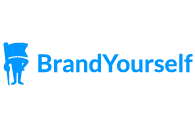
5 Quick Tips to Strengthen Your Personal Brand

Defining and expressing your personal brand is one of the most effective ways to take your career efforts to the next level. Here are 5 quick tips to get started:
1. Craft an effective email signature
Time to complete: 5 minutes
Set your email program to automatically include your full name, what you do, how to reach you, and a link to your website at the end of every email. Here’s how to set a signature in various email programs.
An example of a brand-building email signature:
- Johnny Kuidzu
- Sushi chef extraordinaire and caterer of fine Asian cuisine
- http://www.JohnnyKuidzu.comemail: [email protected]
- cell: (315) 392 1234
Strangers will immediately understand what you’re all about, know how to reach you, and you’ll strengthen your brand awareness.
2. Create a catchy slogan or tagline that sums up your value
Time to complete: 10 minutes
Slogans are short, catchy, and easily remembered. Make one that sums up your passions, strengths and goals. For example: “Johnny Kuidzu – Sushi chef extraordinaire and caterer of fine Asian cuisine.”
Use your tagline in all communications (emails, blog comments, your website etc). Make sure it captures who you are for people who haven’t met you before. Be bold and specific.
3. Create a profile on multiple directories
Time to complete: 5 minutes per directory
Set up a profile on the following directories:
Make sure each profile includes
- Basic information about yourself
- Your tagline
- A link to your website
This will greatly increase the number of relevant search results when people Google you, leading them back to your personal site. Each link to your site will also increase its PageRank. The higher your Page Rank, the higher your site’s position in Google searches.
4. Upload a professional photo that exudes your brand
Time to complete: 3 minutes
A clean-cut, smiling face connects with viewers on an emotional level, leaving a longer-lasting impression. Post your photo on your “About Me” page. You want to be more than text to your readers – be a real person. Remember: if you don’t include a photo, you’re only branding your name – which thousands of other people share!
5. Comment on blogs relevant to your niche
Time to complete: 10 minutes per comment
Provide a personal experience or insight that adds value to someone else’s blog entry. For instance, if you’re into gadgets, comment on Gizmodo blog posts. Proofread before submitting comments – you can’t go back and edit them.
Conclude using your full name, what you do, and a link back to your website. Your comments will increase your visibility within your field and come up in Google searches for your name. The link back to your website will strengthen your PageRank by increasing inbound links.
These five things are easy to do and have a huge payoff. If you have time, I suggest doing them right now:
- Craft an effective email signature
- Create a catchy tagline that sums up your value
- Create a profile on multiple directories
- Upload a professional photo that exudes your brand
- Comment on blogs relevant to your niche
Until next time, this is Pete Kistler wishing you success!

Good stuff, Dave! THanks
Good stuff, Dave! THanks